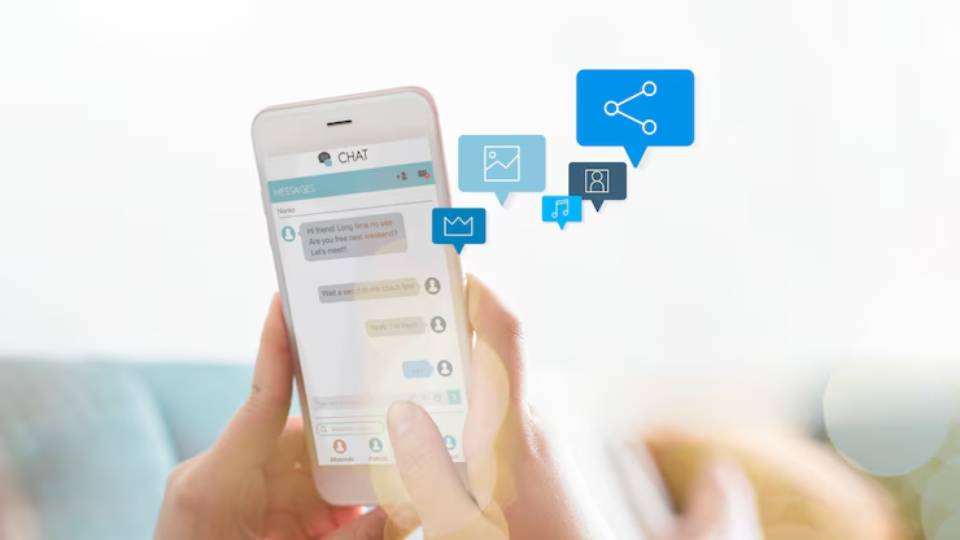
Staying Connected: Internet and Communication on Cruises
Imagine this: you’re sailing through turquoise waters, cocktail in hand, and someone suddenly shouts, “There’s no signal!” For many, going off the grid is a joy. For others — especially remote workers, parents, or social media enthusiasts — staying connected at sea is essential.
Cruise travel offers stunning scenery, new adventures, and a change of pace. But it also introduces one unique modern challenge: internet access in the middle of the ocean. Whether you want to post updates, check emails, or keep in touch with family, understanding cruise Wi-Fi and communication options is key to having both a stress-free and connected holiday.
In this guide, we’ll break down what cruise internet really looks like, how to choose the right packages, and how to strike the right balance between staying plugged in and switching off.
Cruise Wi-Fi: what to expect at sea

Is cruise Wi-Fi reliable?
It’s improved — a lot. While early cruise internet felt more like dial-up in the 90s, today’s ships have stepped up their game. Most major cruise lines now use satellite-based systems (like Starlink) to provide more consistent, ship-wide coverage.
Still, cruise Wi-Fi isn’t exactly the same as what you’d get at home. Speeds can vary based on:
- Your ship’s location
- The cruise line’s technology
- How many people are online at once
Streaming Netflix while sailing past Greenland? Probably not smooth sailing. But for checking emails, browsing social media, or video chatting on calmer sea routes, modern cruise Wi-Fi holds up surprisingly well.
Types of connectivity offered
Most cruise lines offer tiered Wi-Fi packages. While names vary, they usually fall into these three categories:
- Social/Basic Plan: For light use — apps like Facebook, Instagram, WhatsApp (no video).
- Surf Plan: Includes browsing, email, and app usage.
- Stream/Premium Plan: Adds streaming and video calls.
Pricing is often per device, per day, but some lines offer discounted packages if booked in advance or bundled with your fare.
Comparing internet packages by cruise line
Different cruise lines offer different Wi-Fi systems — some more reliable than others. Here’s a quick look at a few popular ones:
Royal Caribbean & Celebrity Cruises
- Provider: Starlink by SpaceX
- Known for: Fast, stable Wi-Fi with affordable stream-ready plans.
- Tip: Book Wi-Fi packages in advance online for better rates.
Carnival Cruise Line
- Plans: Social, Value, and Premium tiers.
- Coverage: Decent, though streaming can be hit-or-miss.
Norwegian Cruise Line
- Offerings: Per-minute plans or unlimited passes.
- Consideration: Unlimited social plans don’t support video or audio.
Princess Cruises
- Technology: MedallionNet Wi-Fi
- Highlight: Fast and reliable, even on sea days, often included in premium fare packages.
Each line’s offering is evolving. Some even allow multiple devices or offer day passes — great for flexible travellers who only need occasional access.
If you’re planning a trip and prioritise digital access, cruise lines with strong connectivity can be as vital as the itinerary or dining experience. This is particularly true if you’re combining remote work and leisure or using your trip as a content creator.
Smart ways to stay connected without overpaying
Choose the right plan for your needs
Not everyone needs top-tier access. Consider:
- Are you working remotely or just staying in touch?
- Will you be streaming video, or just posting photos?
- How many people are in your group? Sharing a plan may save money.
Booking Wi-Fi in advance is usually cheaper than doing it onboard — some cruise lines offer up to 30% off pre-cruise purchases.
Use offline features
Before you even step onboard:
- Download movies, podcasts, and playlists
- Save Google Maps offline for your port stops
- Use apps like Google Translate or TripIt that work without internet
This makes your shipboard time less dependent on a constant signal, especially if you’re limiting data use.
Alternative communication options at sea
Cruise Wi-Fi isn’t your only option for staying in touch, especially if you’re willing to be a little creative.
Ship apps and messaging tools

Most cruise lines have free onboard apps with messaging capabilities, allowing you to:
- Chat with fellow passengers or family onboard
- See event schedules and menus
- Book activities or restaurant reservations
These apps often work via the ship’s internal network and don’t require a paid internet plan — perfect for group coordination.
Mobile phone plans
Check with your mobile provider before departure. Many offer international cruise packages or roaming add-ons, such as:
- TravelPass (Verizon/AT&T): Daily fees for roaming access at sea
- Pay-per-use charges based on your cruise region
Note: Using mobile data at sea without a plan can result in hefty bills due to maritime roaming. Always confirm coverage and switch off data when not in use.
For safety and peace of mind, even if you’re going offline, ensure emergency contacts are set up with your cruise line or cabinmate in case you’re needed back home.
Staying connected during shore excursions
Ports often have stronger mobile and internet signals — but only if you plan ahead.
- Use local SIM cards or eSIMs if you travel frequently
- Visit cafes or restaurants with free Wi-Fi
- Avoid logging in to sensitive accounts on public networks
If you’re planning to spend time online while exploring, consider travel-friendly mobile hotspots or ask about connectivity at your day’s destination.
Cruisers who love independent exploration may find the best experience comes from blending smart tech planning with on-the-ground curiosity, especially when paired with tips like those in how to plan shore excursions independently.
Balancing connection and disconnection
Here’s a question worth asking: Do you really need to be online the whole time?
Cruise holidays offer a rare chance to unplug from everyday pressure. Constantly checking your phone can make you miss the magic around you — that quiet sunrise, spontaneous poolside laughter, or simply the joy of being present.
Try creating boundaries

- Check emails once a day, then log off.
- Designate tech-free zones (like mealtimes or spa visits).
- Leave the phone behind when exploring a new port.
Many cruisers find the experience more enjoyable when they intentionally limit their online time. That balance helps you recharge, both digitally and emotionally.
Managing expectations: what cruise Wi-Fi can and can’t do
It’s important to stay realistic about your internet experience at sea.
What you can expect:
- Basic browsing and communication
- Access to social media
- Light video streaming (on premium plans)
What to avoid expecting:
- Instant, uninterrupted Zoom calls
- Multiple users streaming at once on a single plan
- Guaranteed service in remote areas or extreme weather
The technology is improving, but ships are still at the mercy of satellites and sea conditions.
For those combining leisure and digital responsibilities — such as remote freelancers — these limitations can shape your itinerary and cruise line choice. You may find extra value in strategies outlined in how to maximise onboard credit and save money, particularly if you’re investing in premium internet packages.
Final thoughts on staying connected at sea
Cruise Wi-Fi and communication options have come a long way, but they still require a little planning, a bit of compromise, and a flexible mindset. Whether you’re travelling with loved ones, managing a remote job, or simply wanting to share the joy of your voyage in real-time, there’s a solution to fit your connectivity needs.
From bundled plans and smart pre-downloads to knowing when to put your phone down and look out at the sea, staying connected is more about how you connect, not just when or where.


